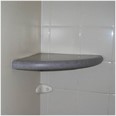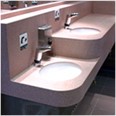Provision of Public Toilets
| Bureau / Department | Food and Environmental Hygiene Department (FEHD) |
|---|---|
| Objective | To provide public toilet facilities at public places across the territory. |
| Content | FEHD is responsible for providing public toilet facilities across the territory. In general, public toilets are to be provided at ferry concourse, bus terminus, picnic area, tourist spot, and any place where crowds are likely to congregate or transient pedestrian traffic is heavy. |
| Groups / Persons Affected | Members of the general public. |
| Impact | In planning the provision of public toilet facilities, FEHD has taken into consideration the fact that females usually need to spend longer time in toilets than males. Therefore, FEHD has increased the WC compartment ratio (female to male) from 1.5:1 to 2:1 since April 2004 as a general guideline in planning FEHD public toilet facilities. FEHD also installs gender-sensitive and user-friendly facilities such as racks, hangers, baby-changing counters, and emergency call bells in the toilets where possible. In conducting Customer Satisfaction Survey on FEHD public toilets in 2004, FEHD segregated the data collected from male and female to study their respective satisfaction levels and whether they had different views on the toilet facilities, e.g. whether they consider the WC compartments were sufficient. According to the survey results, female toilet users had an overall satisfaction score above average and close to 'satisfactory' (the score was 3.81 on a 5-point scale with 5 being very satisfactory). It was slightly higher than the score of 3.69 by male users. 


The survey also found that female users were generally more satisfied with the cleanliness level, facilities and services of public toilets than male users. In particular, female users gave a 3.96 score on whether they thought the WC compartments in public flushing toilets were adequate. Because of increased awareness in this area, FEHD will incorporate more gender perspectives when conducting similar surveys in future to ensure that women's concerns will be reflected. Gender neutral language, e.g. "public toilet users" - has been adopted where appropriate. |
| Success Factor / Lessons Learned | There is a gender focal point in FEHD before applying the Checklist. Applying the Gender Mainstreaming Checklist has helped FEHD staff further increased their awareness on the specific needs of male and female toilet users, and the need to take their perspectives into account in collecting feedback / conducting evaluation. When FEHD conducts Customers Satisfaction Surveys in future, they will incorporate more gender perspectives and will continue to look for room for improvement in the provision of public toilet facilities to meet the specific needs of different genders. |



